Self-Awareness
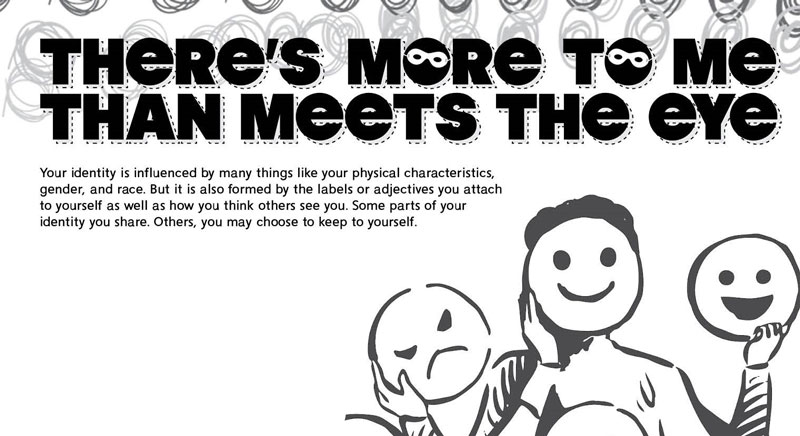
Find this activity in the student portfolio
Objective: Students will be able to identify the many factors that shape their identity.
Estimated Duration: 20 minutes
Description: Self-identity is how you identify and define yourself. It is made up of many parts including your values, beliefs, personality traits, physical attributes, and abilities.
As you get older, it also formed by the labels or adjectives you attach to yourself as well as how you think others see you. There are parts of our self-identities we want to share with others and parts we keep concealed.
This activity will allow students to think about all the parts of their identity. They will design a mask that shows who they are and what they want others to know about them.
Teachable Moments: There are many ways you can help improve and build self-identity in your students:/p>
- Embrace multiple social identities, remind all students that they have many different identities and each one is a part of who they are. Embracing multiple identities helps students to think flexibly about who they are as well as their view of others’ identities.
- Put every student's work on the wall, whether or not it's perfect.
- Highlight students’ strengths and passions.
- Include posters and displays that include other people who look like your students.
- Be a good role model by emphasizing healthy values like positivity and healthiness.
- Teach students to recognize unhealthy media messages that can cause harm to their self-esteem and image.
- Ban harsh criticism and create a classroom that is free from bullying.
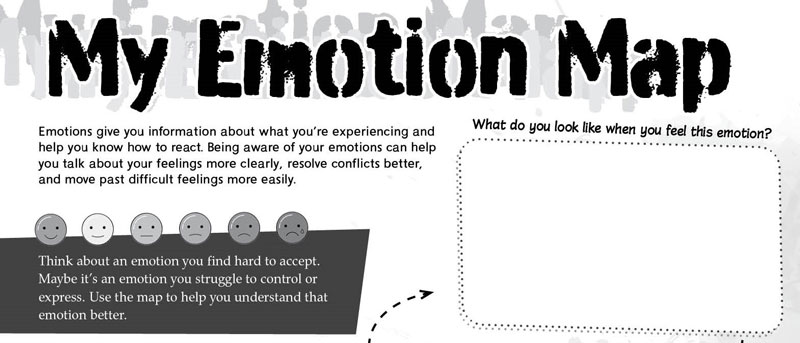
Find this activity in the student portfolio
Objective: Students will be able to identify their emotions.
Estimated Duration: 20 minutes
Description: Emotional awareness is the ability to notice, accurately name, and interpret our emotions. It is an important skill students need to have in order to be successful in life.
Emotional awareness helps us know what we need and want (or don't want!) and helps to build better relationships. Being aware of our emotions can help us talk about feelings more clearly, avoid and resolve conflicts appropriately, and move past difficult feelings more easily.
This activity will help students map out a solution or plan for an emotion they find difficult to control or express. They can use the plan to remind them how to handle that emotion the next time they feel it.
Teachable Moments: There are many ways you can help students identify their emotions:
- Talk about your emotions and feelings; ask students about theirs.
- Model appropriate reactions and behavior for different emotions.
- Remind students that emotions are not good or bad, it is how we react or express them that makes them good or causes harm.
- Role play classroom situations that bring about difficult emotions; ask students to talk about how they would feel if this happened to them; have them come up with ways to cope with different emotions.
- Have students get into the practice of rating their emotions. Knowing how strongly they are feeling about something can help them figure out how to work through it or what to do next.
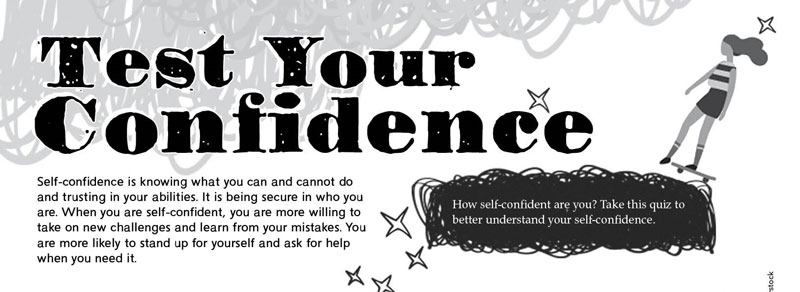
Find this activity in the student portfolio
Objective: Students will develop a well-grounded sense of confidence.
Estimated Duration: 20 minutes
Description: Students who feel good about themselves have the confidence to try new things. They are more likely to try their best. They feel proud of what they do. Self-confidence helps students cope with mistakes. It helps them try again, even when they fail at first.
Confidence is vitally important to a child’s future happiness, health, and success. Confident children are better equipped to deal with peer pressure, responsibilities, frustrations, challenges, and both positive and negative emotions.
This activity will help students build self-confidence by having students take a quiz to understand what things might affect their self-confidence. It will help them learn how to build and protect their confidence in the future.
Teachable Moments: There are many ways you can improve and build self-confidence in your students:
- Teach students not to be afraid of failure. Failing does not mean you are incapable or unintelligent; it simply means that you need to reevaluate and try again.
- Have students set realistic goals based on their strengths and talents.
- Praise and encourage your students. Replace general words such as “good job” or “great work” with specific words of affirmation.
- Challenge your students academically and let them think at a deeper level.
- Allow students to express their creativity in your classroom.
- Allow students to make choices and provide diverse options.
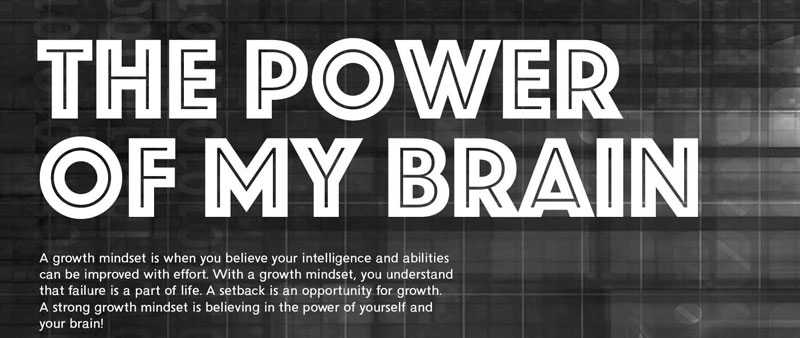
Find this activity in the student portfolio
Objective: Students will understand a growth and a fixed mindset.
Estimated Duration: 20 minutes
Description: Mindset is the way our brain perceives ourselves and the world. Our mindset helps us look at problems and mistakes in a positive way.
A growth mindset occurs when you believe your intelligence and abilities can be improved with effort and the right strategies. A growth mindset is when you know, with practice, you will get better at something. This type of mindset is strongly linked to greater happiness and achievement in life.
A fixed mindset is when you believe your intelligence and abilities cannot be altered in a meaningful way. With a fixed mindset mistakes are often seen as failures instead of opportunities to learn. When a student is stuck in a fixed mindset they may fear new experiences, avoid risks, and feel the need to improve themselves. A fixed mindset means you think you can’t get better at things, even if you practice.
This activity will help students understand a growth and a fixed mindset by having them follow a maze to a growth mindset example.
Teachable Moments: There are many ways you can help improve and build a growth mindset in your students:
- Praise the process, not just the result. Think of affirming action more than praising attributes.
- Create growth imagery throughout the classroom. Use visuals to represent pride and hard work.
- Take time to add reflection to assignments. This will allow the opportunity to embrace failures and what was learned from them.
- Discuss your own experiences and struggles with your class.
- Explain that failure is a part of the process of learning new things.
- Promote the value of hard tasks to the brain. Explain that brains are “muscles” that can be developed.
- Develop cooperative exercises. Working together to solve problems emphasizes the process and reinforces getting help and finding solutions.
Foldable®: Selfie Moments
Estimated Duration: 25-30 minutes
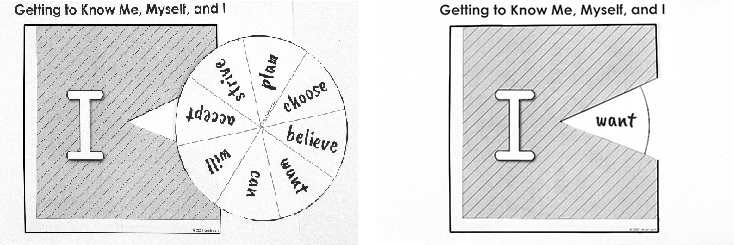
- Cut along the outside solid black lines of “I” pocket and the word wheel.
- Glue the white edges of the “I” pocket onto the Selfie Moments page of the student book.
- After the glue has dried, insert the word wheel and turn it to form different phrases.
- Students mentally and/or orally complete the phrases to learn more about themselves.
- Students could record some of their responses in a notebook or journal.
- Some students might want to share their self-discovery and others will want this to be private.
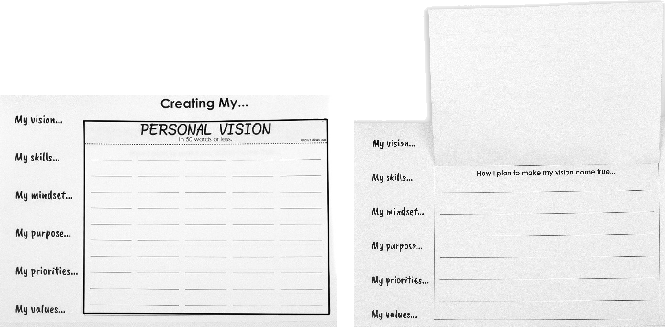
- Cut along the outside solid black lines of the One-Tab Foldable.
- Fold along the dotted line at the top of the rectangle to form an anchor tab.
- Glue the folded tab on top of the gray space in the student book that says: Glue anchor tab here: My Personal Vision.
- Guide students to use the prompts on this page and things they discovered in the “I Wheel” to develop their own personal vision statement. Using fifty words or less, students summarize their priorities, determine what they enjoy, and identify their strengths and weaknesses.
- Under the tab, students write about how they plan to make their vision become a reality. As a class, discuss that it takes time and effort to reach a personal vision, and visions can change over time as students change and learn more about themselves and the world around them.
- Some students might want to share their personal visions and others will want to keep them private.
Go to other SEL competencies in this book (Intermediate 2 - Grades 5–6):
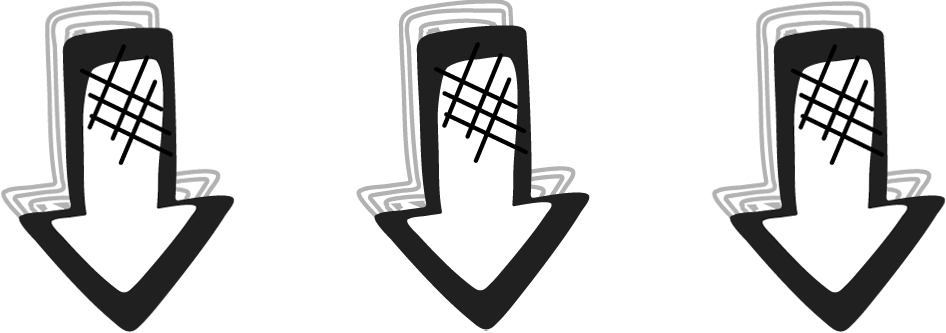
The teaching suggestions only work in accompaniment with the student portfolio, which has all the activity pages.
The teaching suggestions here are also available within a PDF of the entire teacher's manual.